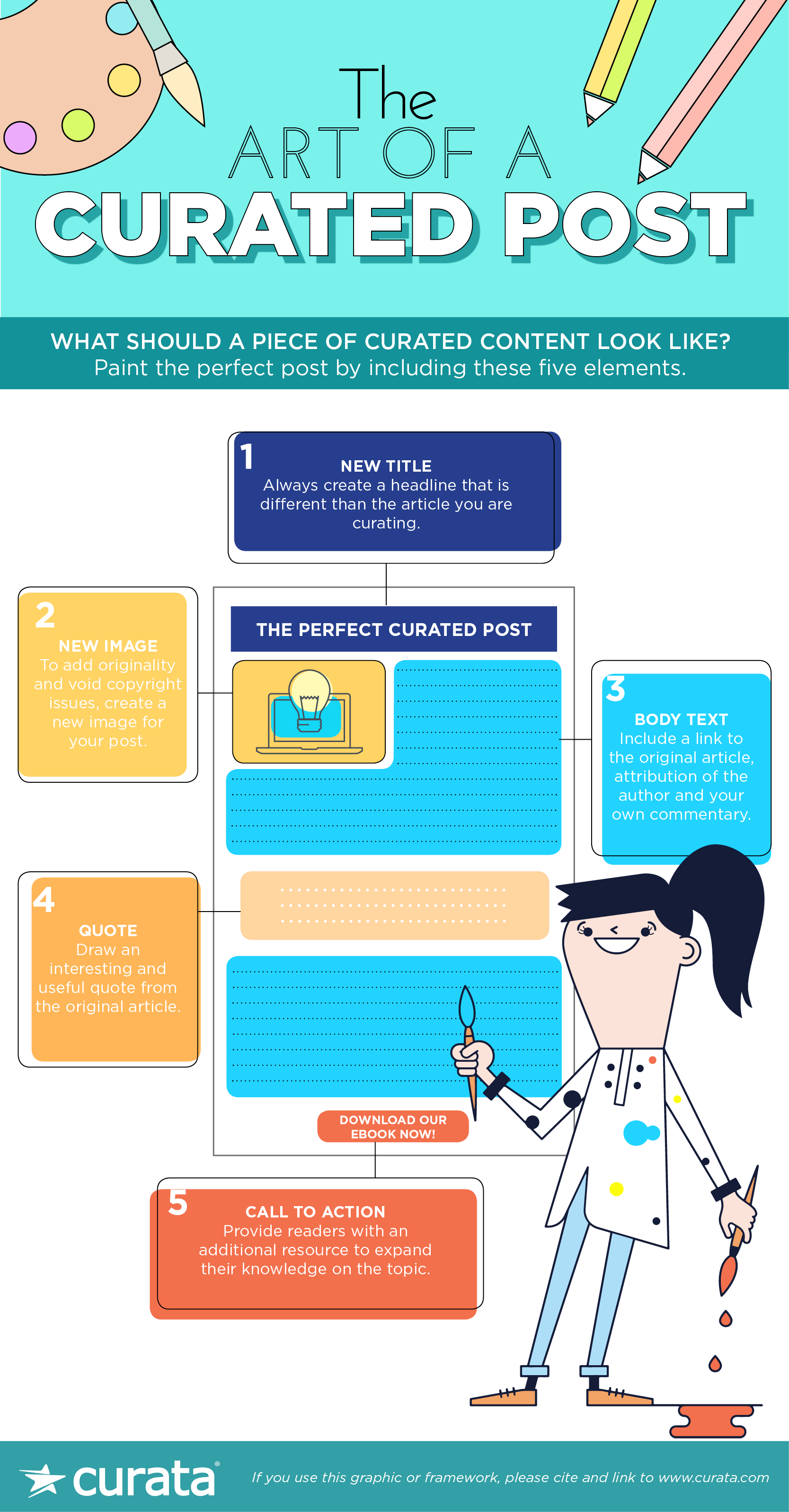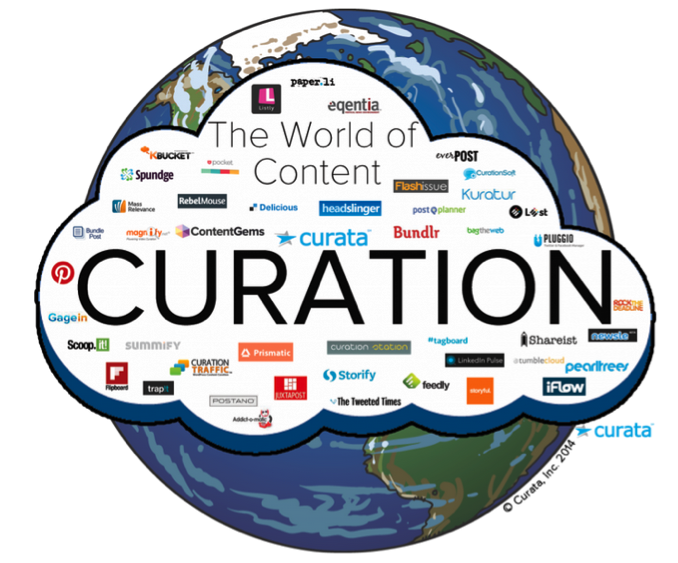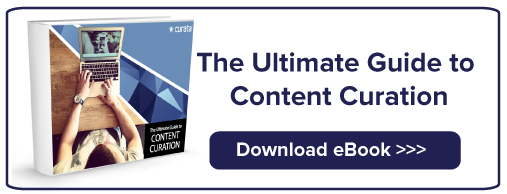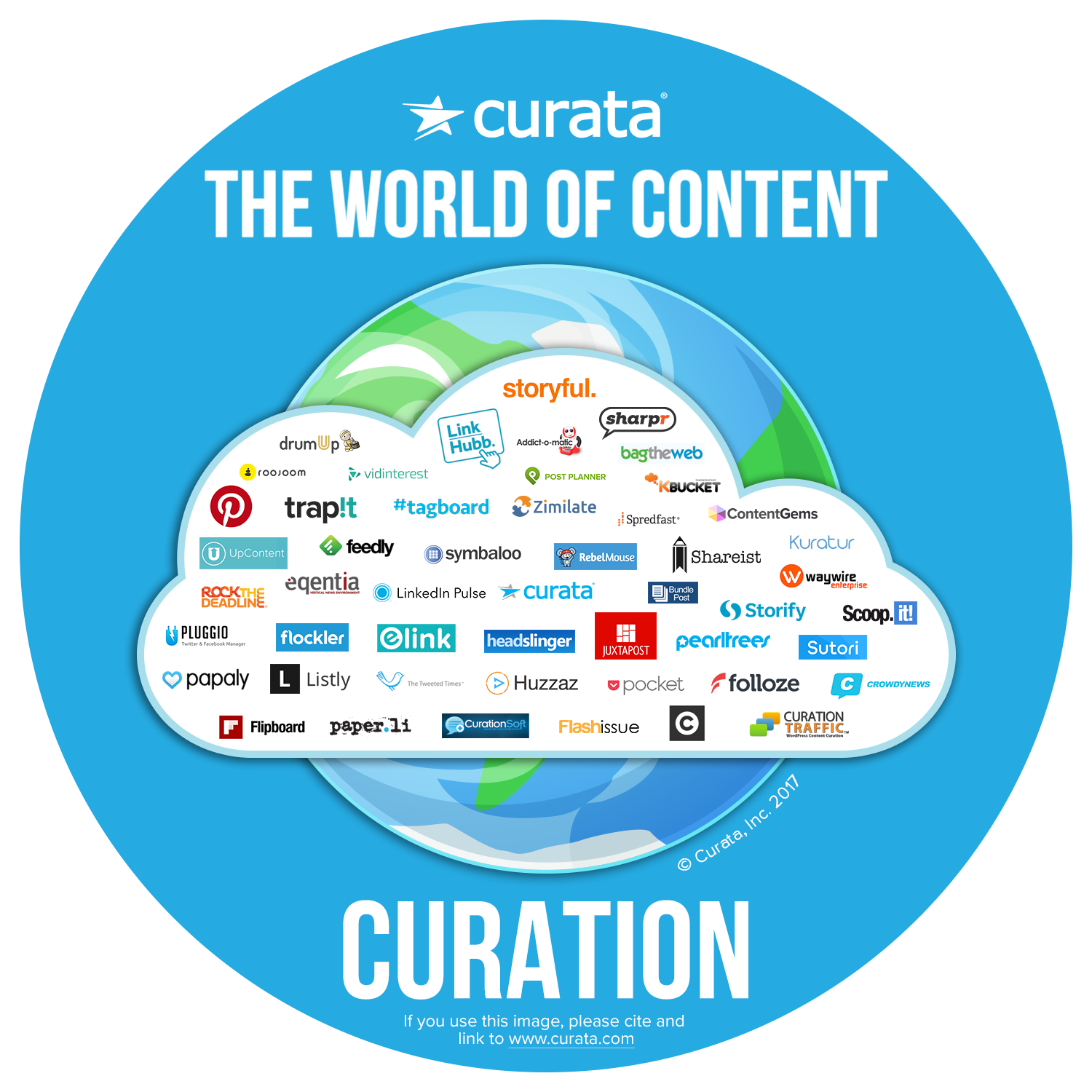- Share Content Curation: The Art of a Curated Post [Infographic] on Facebook
- Share Content Curation: The Art of a Curated Post [Infographic] on Twitter
- Share Content Curation: The Art of a Curated Post [Infographic] on Linkedin
- Share Content Curation: The Art of a Curated Post [Infographic] via email
For content marketers wanting to economically increase content production, content curation is the optimal solution. It benefits both publishers and audiences—who appreciate expertly selected, third party, independent content. In fact, according to Curata’s study, best-in-class marketers use a content marketing mix of 65 percent created content and 25 percent curated content.
But many people interested in content curation—and some who are already curating—may still have lingering questions about best practices.
What should a curated post look like? How much of the original article should I include? How do I align this content with my own content?
To help answer some of these questions and outline the anatomy of curated piece of content, we created “The Art of a Curated Post.” Just like a painting, a good curated post is not complete without all the necessary elements. Follow along as this curator—let’s call her Claire—paints the perfect post.
Five Elements of Content Curation
1. New Title
It’s vital to always craft a new headline to avoid competing with the original article in search engine results. And a good headline can be the difference between someone clicking on your article or ignoring it. Some handy sites to use for creating titles include:
- Upworthy.com – Although many of these titles can be outrageous, simply browsing this site will help in brainstorming catchier titles.
- UpworthyGenerator.com – This website provides a new “Upworthy Style” title every time you click “Generate.” Again, while these titles are outrageous—and in this case, fake—it’s a good jumping off point to start pushing the boundaries with headlines.
- TitleCapitilization.com – This tool comes in handy any time you are wondering which words are capitalized in a title. Simply paste your title into the field on the home page and it automatically corrects capitalization errors.
- UberSuggest.org – This website helps find popular keywords surrounding various topics to help your article rank higher in search engine results.
- Thesaurus.com – Never underestimate the power of a synonym. Often, simply inserting one word in place of another can take your title to the next level.
Remember, even if a title worked well on the original post you’re curating (it got you to click, didn’t it?), it may not work well for your specific audience.
For example, at Curata we often curate posts about social media best practices. However, we try to put it in the context of content marketing, since this is what our audience wants to read about. A recent post showing this is titled “How to Optimize Content For Social Media Success.”
2. New Image
To avoid copyright issues and add originality to your post, use an entirely new image. Useful image sites include:
- Stock photo libraries such as Shutterstock, iStock, RGBStock
- The Creative Commons for free ‘Copyleft‘ images in a range of licenses
- Image Creation tools such as Canva
- Basic design tools such as PowerPoint, and more sophisticated tools such as Adobe Creative Suite and the free, open source GiMP
3. Body Text
Your own, original body text should take up the majority of the post. Include the following elements:
- Attribution of the original article and author (with a link to the article)
- Commentary and/or annotation. Frame the original article in a useful way to your readers by citing the content’s relevance to them, and provide your own analysis on the topic or issue at hand
- Links to created content. You’ve no doubt spent time creating unique and interesting blog posts, eBooks, and other resources. Now is the time to link back to these assets—when they relate to the topic—and give your audience additional value/further reading
4. Quote
Draw in a quote from the original article, or even several quotes. The exact format can vary depending on the length of the original article and its topic. Be sure to pick a quote or stat that will surprise, educate, and/or entertain your readers. This is your opportunity to bring in intelligent outside voices—one of the main advantages of content curation.
5. Call to Action
A call to action (CTA) is necessary for every blog post, but it’s especially important for curated content. Don’t leave readers hanging. Link to a piece of your content that helps expand their knowledge on the subject at hand.
Offer readers a piece of gated content such as an eBook or a webinar to help generate new leads and nurture existing leads. Keeping leads engaged reinforces how you are catering to their needs and bringing them value on a consistent basis.
Make sure your CTA is both eye-catching and appealing. Here are some great articles about creating CTAs that convert:
- Anatomy of a CTA by Vieo Design
- How to Make Calls to Action More Effective by Search Engine Watch
What’s Next?
This is a useful template for composing a curated post, but note there is much more to the curation process not touched upon here. E.g., finding articles to curate and promoting content once it is produced.
Fortunately, there are many tools and technologies to help with each step of this process. We rounded up a handy selection of curation tools in this ultimate list to help you weigh your options.
Want to know more about curating content? Curata’s eBook, The Ultimate Guide to Content Curation will have you curating like a champ. Alternatively, reach out to us for a demo of Curata’s content curation software.










